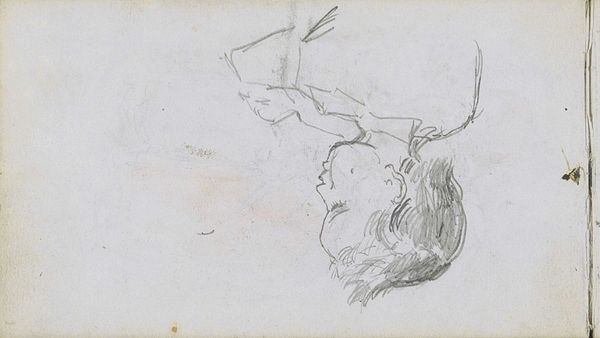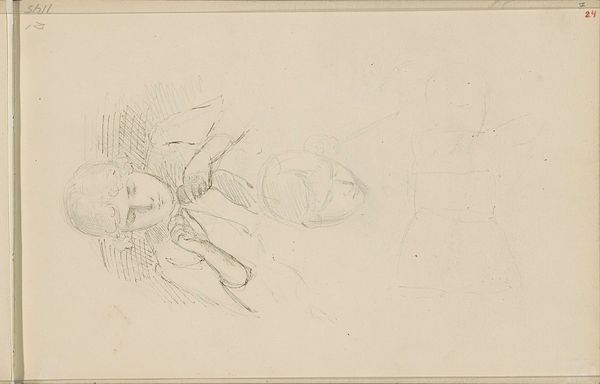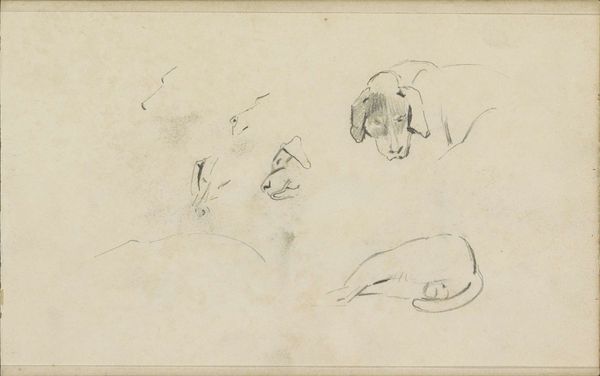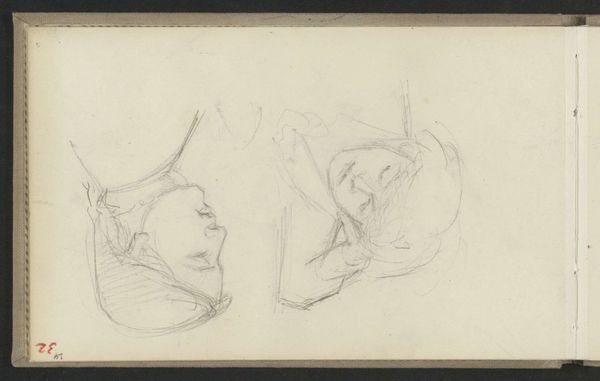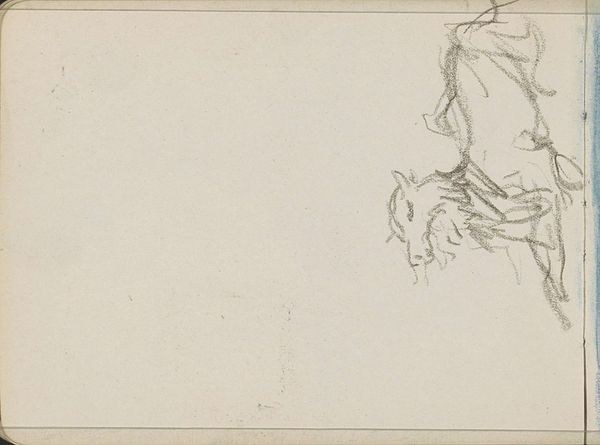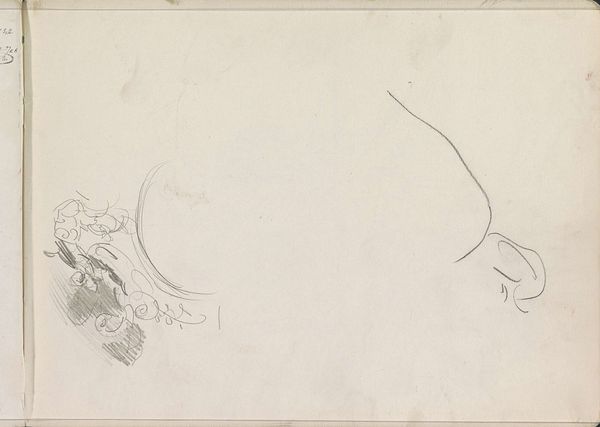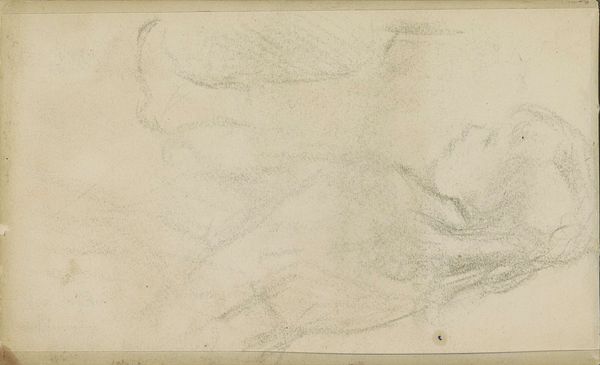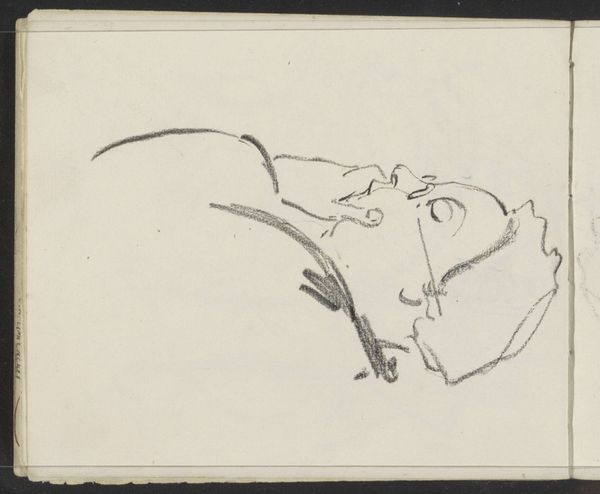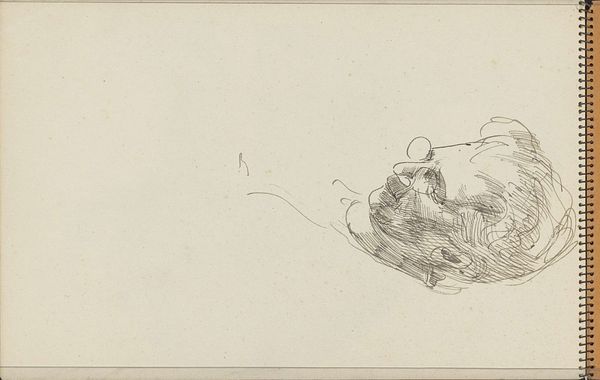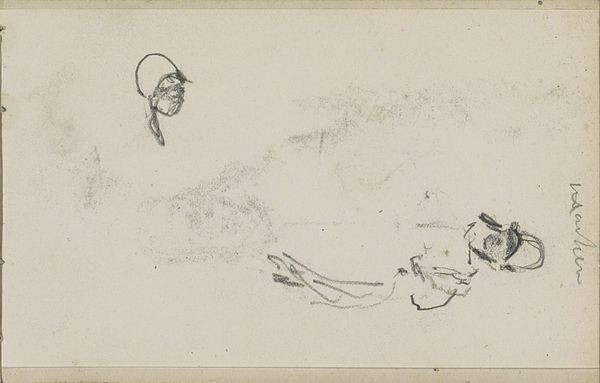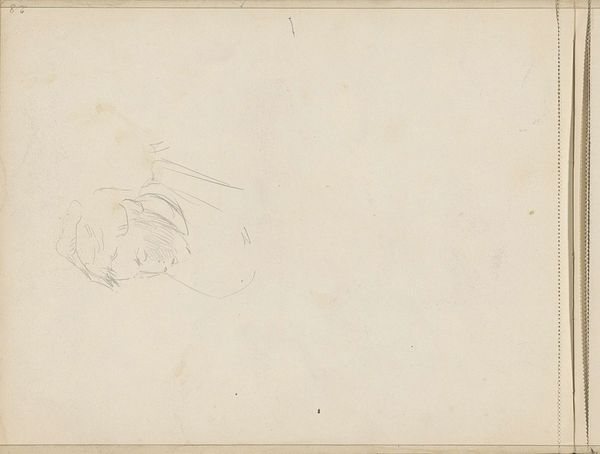
drawing, pencil
#
portrait
#
drawing
#
figuration
#
pencil
#
realism
Copyright: Rijks Museum: Open Domain
Editor: We're looking at "Portretkoppen van Hanna en Hanne," a pencil drawing from around 1892 by Julie de Graag, housed here at the Rijksmuseum. It's interesting how the artist captures the profiles so simply, almost as a preliminary sketch. What historical insights can you offer about this piece? Curator: Well, beyond the evident realism, consider this drawing within the context of late 19th-century portraiture. It was a period wrestling with the rise of photography. Drawings like this become less about recording likeness and more about capturing something internal, something psychological. Does the casual nature, the sketch-like quality, suggest anything to you? Editor: Perhaps a sense of intimacy? It feels like we are seeing a private moment between the artist and her subjects. Do we know who Hanna and Hanne were? Curator: That's a key question. Their identities are less important than what they represent. These were likely friends or family of the artist, their portrayal becomes a social commentary. Consider the burgeoning role of women in the art world at this time. Editor: I see what you mean. Was this displayed publicly at the time or kept as something more personal within the artist’s circles? Curator: Exactly. Thinking about that exhibition history or lack thereof reshapes how we interpret it. Did it challenge conventional portraiture meant for public consumption? Was it a radical statement on women, art, and how social circles influenced it? What are your closing thoughts? Editor: It’s fascinating to realize how a simple drawing like this can offer such rich insights into the social dynamics of the time. Thank you. Curator: My pleasure, it always enriches our experience to engage like this, seeing art and cultural history interwoven.
Comments
No comments
Be the first to comment and join the conversation on the ultimate creative platform.
